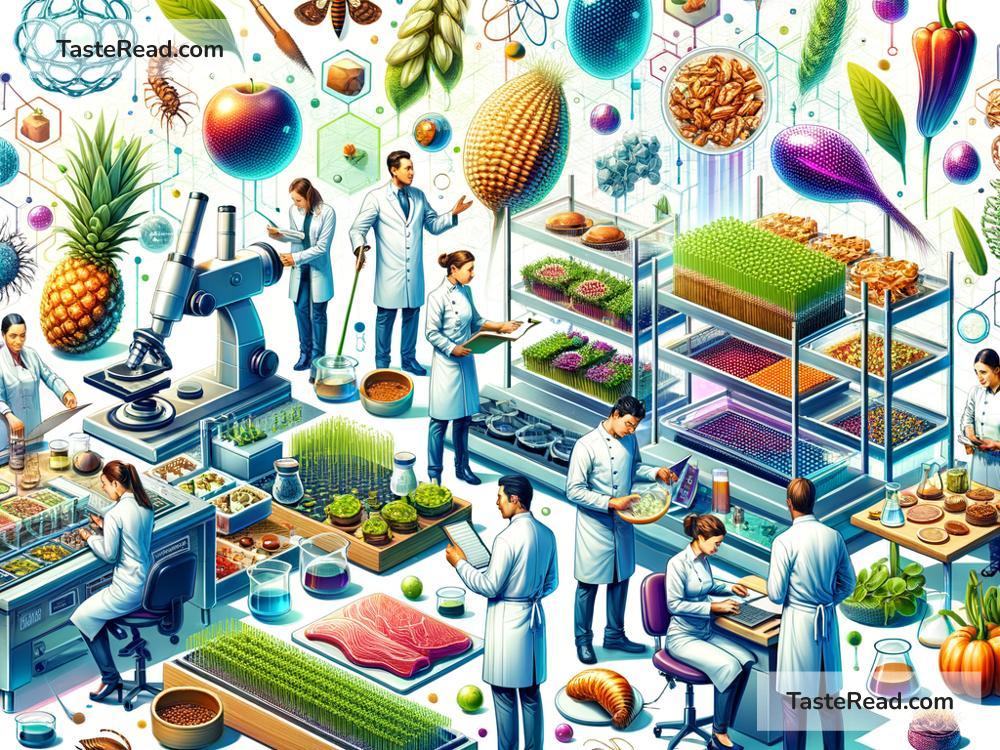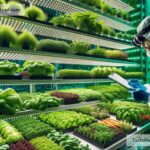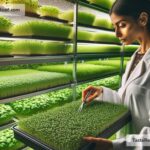The Future of Food and Sustainable Global Practices
Food is one of the most important parts of our lives. It gives us the energy to work, play, and grow. But as the world changes, so does the way we produce and consume food. Scientists, farmers, and leaders around the world are thinking about how to make food production sustainable for the long term. This means growing and distributing food in ways that are not harmful to the planet or future generations. In this article, we’ll explore how food is changing and the sustainable practices that could shape our future.
Why Do We Need Sustainable Food?
Our global population keeps growing. By 2050, it’s expected there will be nearly 10 billion people in the world. That’s a lot of mouths to feed! But, at the same time, we are facing challenges like climate change, deforestation, and water shortages. Modern farming practices are also putting a strain on the environment, as they often involve cutting down forests, using chemical fertilizers, and overusing freshwater resources.
Food production is responsible for about a quarter of global greenhouse gas emissions. Livestock farming, like raising cows and sheep, produces especially high levels of emissions, including methane, which contributes to global warming. If we don’t make changes soon, the planet may struggle to support future generations. This is why sustainable food practices are so crucial.
What Is Sustainable Food?
Sustainable food focuses on methods of growing, producing, and eating food that protect the environment, support local communities, and respect animal welfare. It’s about finding balance—creating enough food for everyone without damaging the earth.
Some of the key goals of sustainable food include:
- Reducing waste: A shocking amount of food is wasted every year. By reducing food waste, we can make sure resources like water, soil, and energy aren’t wasted in vain.
- Using fewer chemicals: Sustainable practices avoid excessive use of harmful pesticides and fertilizers that pollute soil and water.
- Supporting biodiversity: Biodiversity means having a variety of plants, animals, and ecosystems. Healthy biodiversity ensures food security by protecting crops from pests, diseases, and climate shifts.
- Lowering emissions: Sustainable farming seeks to reduce greenhouse gases by using smarter techniques like rotational grazing and better management of fertilizers.
Innovative Food Technologies
The future of food might look very different from today, thanks to advances in technology. Here are some exciting ideas that could transform how we feed the world:
1. Plant-Based Meat Alternatives
You may have heard of plant-based burgers, sausages, and dairy products. These foods are made from ingredients like soy, peas, and oats, but they taste and feel like meat or milk. Companies like Beyond Meat and Impossible Foods are creating tasty alternatives that reduce the need for livestock farming. Producing plant-based foods uses far less land, water, and energy than raising animals. This shift could significantly lower emissions while still keeping meat lovers happy.
2. Lab-Grown Meat
Another futuristic idea is lab-grown meat. Scientists are able to grow real meat in laboratories using animal cells. This means we can eat meat without actually raising or killing animals. Lab-grown meat also requires much less land and water, making it a solution to both ethical and environmental concerns.
3. Vertical Farming
Vertical farming is a method of growing crops in stacked layers, usually indoors. This technique uses less space, less water, and fewer pesticides than traditional farming. Vertical farms can be built in cities, meaning fresh produce can be grown closer to where people live. The closer the food is to consumers, the less transportation is needed, which helps reduce emissions.
4. Precision Agriculture
Precision agriculture uses technology like drones, sensors, and GPS to monitor crops and animals. These tools help farmers work more efficiently, applying resources only where needed. For example, if one part of a field needs more water or fertilizer, technology can identify that specific area. This reduces waste and helps conserve resources.
5. Edible Insects
While it might sound surprising to some, insects are a nutritious, sustainable food source. They require very little land, water, and food to grow compared to livestock. Eating insects is already common in many cultures, and western countries are beginning to explore this protein-packed option. Crickets, mealworms, and grasshoppers are just some examples of insects that people may eat more in the future.
Everyone Can Make a Difference
Sustainable food isn’t just about farmers or scientists—it’s about all of us. Each person can make choices that help the environment and support fairer food practices. Here are some simple changes you can make:
- Eat less meat: Even small reductions in meat consumption can have a big impact.
- Buy local: Supporting local farmers reduces transportation emissions and boosts local economies.
- Reduce food waste: Use leftovers, plan meals, and store food properly.
- Try new foods: Be open to alternative proteins like plant-based meats and insects.
A Hopeful Future
The future of food is full of challenges, but it’s also full of hope. By embracing innovative technologies and sustainable practices, we can ensure that everyone has enough to eat without harming the planet. This shift won’t happen overnight, but every small step counts. Governments, businesses, and individuals all have a role to play in creating a food system that works for both people and the planet.
Together, we can build a future where food is nourishing, accessible, and sustainable. Let’s start today.


